Teamwork vs Asana vs ManyRequests: Which Fits Creative Agencies Best in 2025
Compare Teamwork vs Asana for creative agencies. See why ManyRequests outperforms both with built-in client portals, billing, and automation.

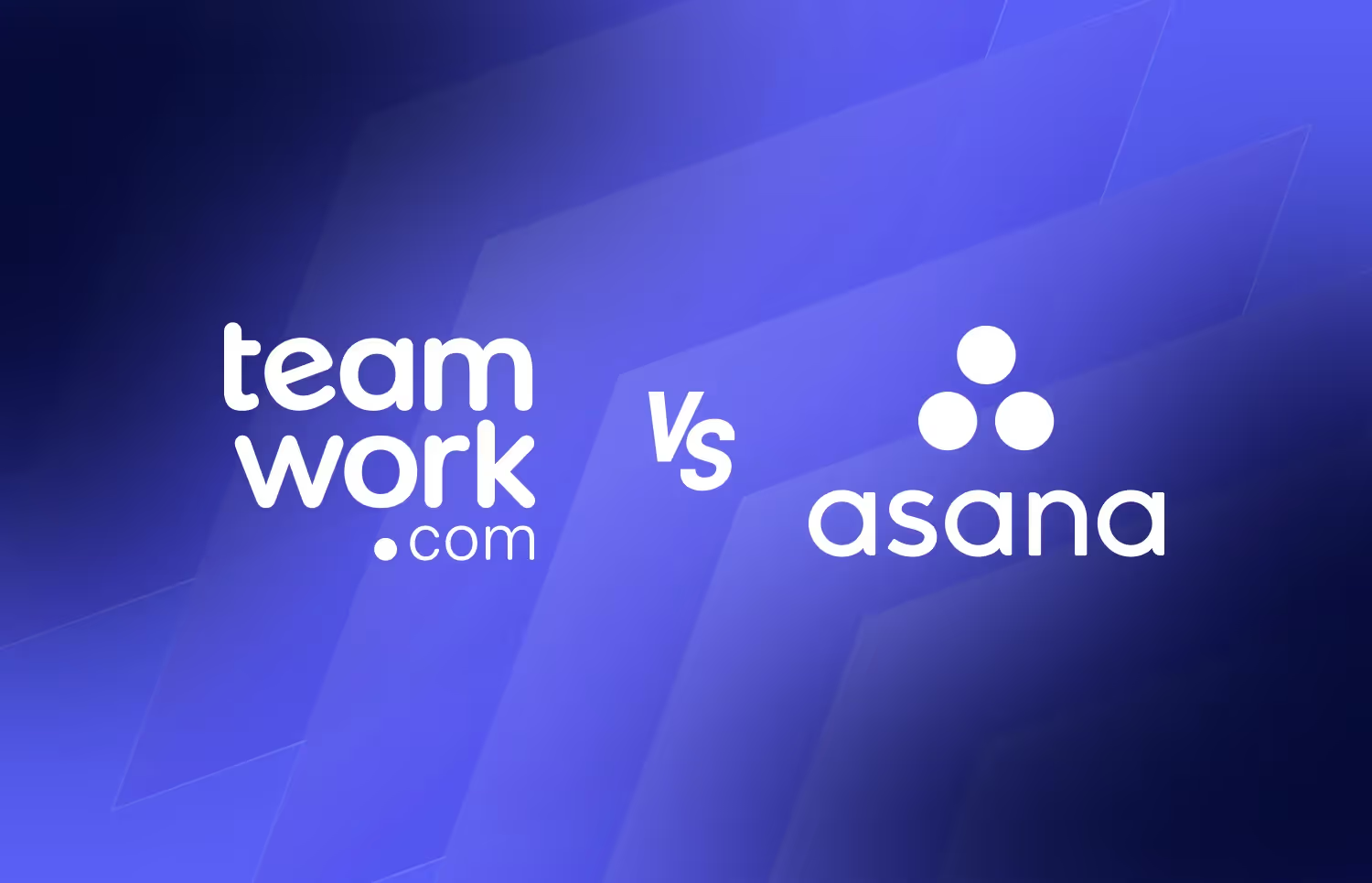


Teamwork and Asana are creative agency project management tools with different approaches to creative work.
Of course, the best project management tool for your agency depends on your creative process and the features that matter more to your process.
For example, Teamwork provides a client portal, but Asana primarily serves internal team collaboration, while ManyRequests combines both features in one platform.
In this article, I'll compare Teamwork vs. Asana for creative agencies, including Asana vs Teamwork features and pricing, and I’ll share why ManyRequests is a better alternative to both for creative agencies.
Let's start with Teamwork.
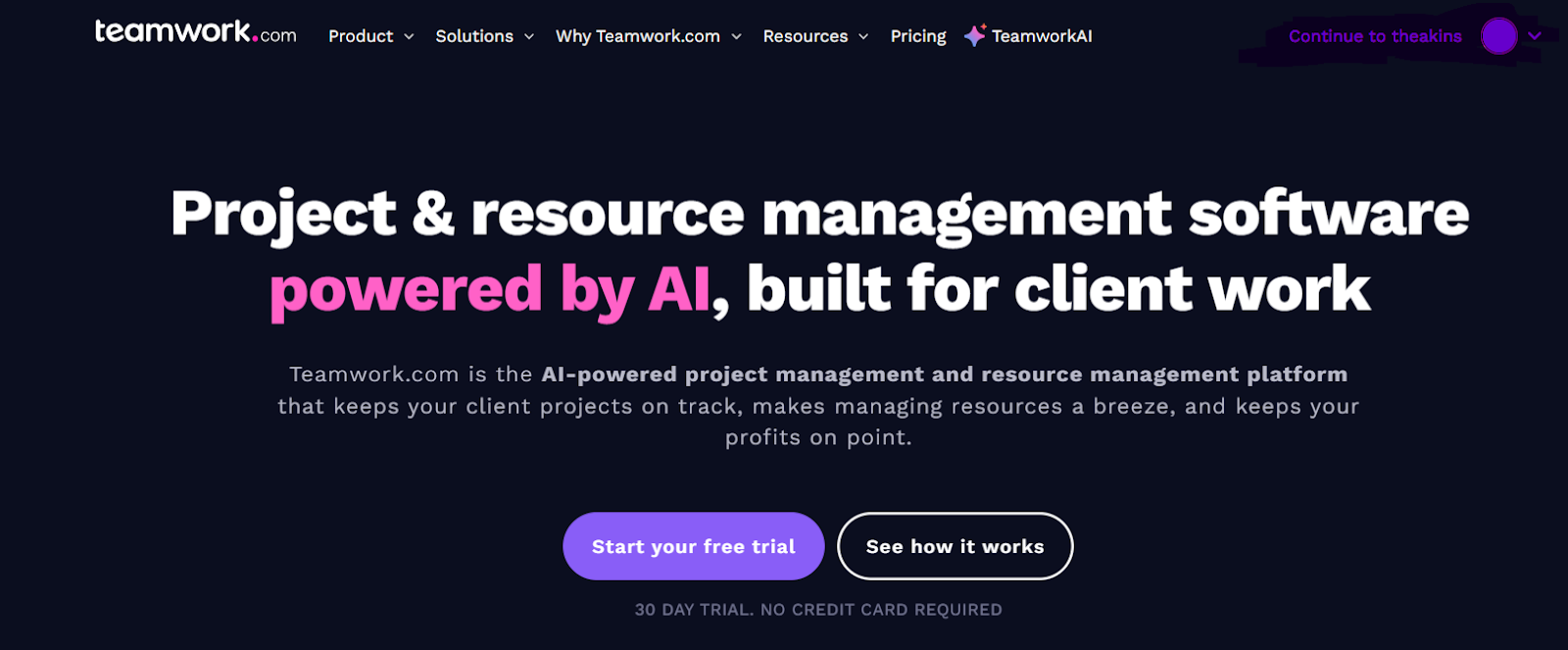
Teamwork is an AI-powered project management software that helps creative agencies manage client projects, internal work, and their resources in a centralized platform.
Let's look at some of its features:
Teamwork is structured around client projects, which means every project can be tied to a client account, budget, and team.

When you create a new project, Teamwork allows you to either start from scratch or use a pre-built template.
These templates help you fasten the process for repeat processes, like when you onboard new clients or produce monthly social content for the same client.
You can also assign projects to your team, along with the due dates, milestones and linked tasks when you set the task up.
Teamwork provides several options to view your dashboard, including the list, board(kanban), table, etc, which is great if you handle large production calendars.
But if your team prefers high-visual layouts like storyboards or campaign timelines, Team work's project view may feel limited.
Teamwork lets you bring clients directly into your workspace. You can add clients with restricted permissions and allow them to:
Through its client portal, clients can see their project progress without accessing sensitive data, like your team budgets or internal notes.
There's also a Proof feature that allows visual feedback loops. Your clients and teammates can markup files, leave comments, and approve submissions without sending long emails or needing third-party tools.
Many creative agencies track their time to bill their clients. Teamwork has a built-in time tracker that lets team members start timers directly from any task or log time manually.

The system classifies the time your team inputs as billable or non-billable and aggregates everything into a company-wide timesheet.
Your team managers can also filter time logs by client, project, or team member, which helps with both accountability and profitability tracking.
You can also see who’s available, who's overbooked, and how your team’s capacity aligns with the deadlines you’ve set with its resourcing feature.

Teamwork attaches a financial budget to every project, which is easier because you can define billable rates and track actual vs. estimated costs based on each task.
The system also gives you an option to choose between fixed, recurring, or hourly budget types depending on how your agency bills clients.
Teamwork’s interface is clean, but it's more functional than simple. The dashboard, for instance, shows what you need, but there isn't really much of a design flair compared to other Teamwork alternatives.
This was a bit overwhelming for me, as a first-time user, but once I got the hang of it and created projects, it got easier.
Free: $0
Deliver: $13.99 monthly
Grow: $25.99 monthly
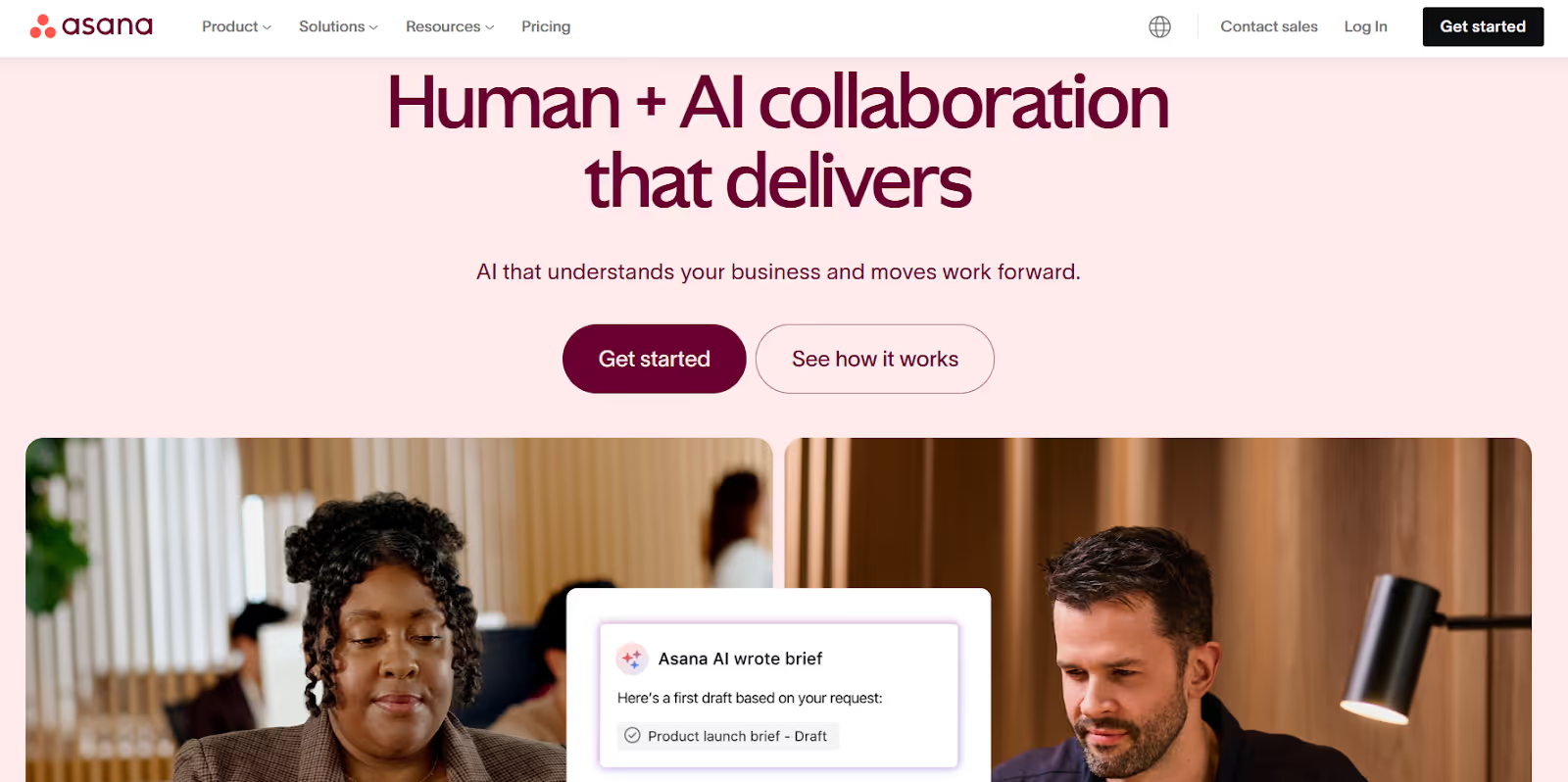
Asana is project management software that tracks, organize, and helps teams manage projects.
Like most project management tools, Asana lets you create projects, assign them as tasks to your team members, and monitor their progress through the dashboard.
One of Asana’s fortes is its array of ways you can organize your project.
The system provides five different formats to organise your project, including a
You can toggle these views to alter the project structure to what your team prefers.
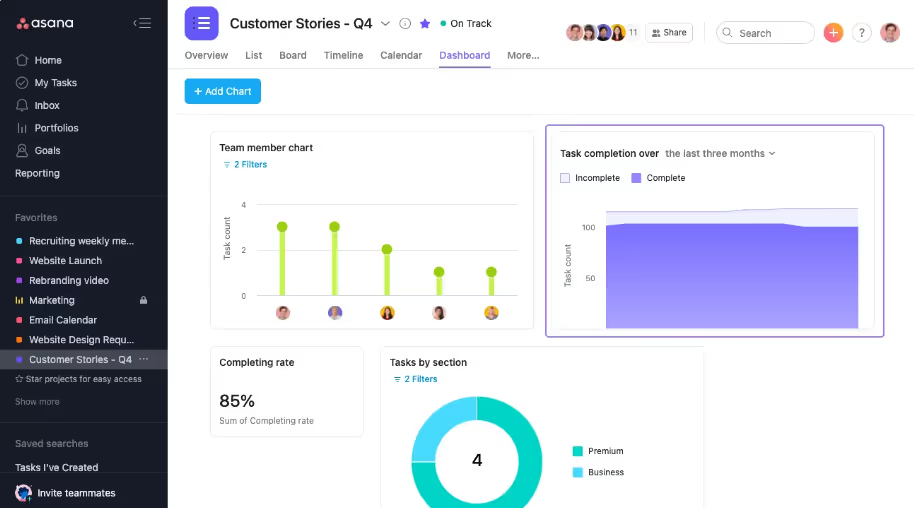
Let's go through more of its features:
At its core, Asana helps creative teams plan, organize, and visualize their work through its intuitive interface.
Each project you create on Asana has an option to add sections, tasks, subtasks, dependencies, and milestones, which allows your team to structure their work exactly to their process.
But Asana doesn't tie projects to clients, or budgets like ManyRequests or even Teamwork would.
So while you can see which creative project your team is working on, you can't track their financial efficiency without external tools.
Asana provides great internal collaboration features, but not so much for external client communication.
For instance, your teams can:
Each task has a conversation thread where team members can share information on the task. They can also @mention themselves, and the mentioned members get an instant notification.

But that's just for internal communication. If you're trying to sync your clients in, Asana falls short here.
While you can invite your clients with limited permissions, Asana doesn't have any built-in client portal or feedback workflow.
Your clients can only receive shared links that expire or full user invites, which would mean you have to pay for more seats if you're on a paid plan.
That's an expensive hassle.
The other alternative is to integrate Asana with platforms like Figma, Loom, and Slack to discuss and share information with your clients. But this defeats the purpose of an all-in-one project management platform, like ManyRequests provides.
Asana provides time tracking features, but they are basic and you can only access it on the Business and Enterprise plans.
Unlike ManyRequests, which offers detailed time tracking on all of its Plans, Asana only allows you to estimate tasks and record the actual time spent on these tasks by manual entry or using a built-in timer.
You can add two custom fields (Estimated time and Actual time) to projects and track them through project dashboards.
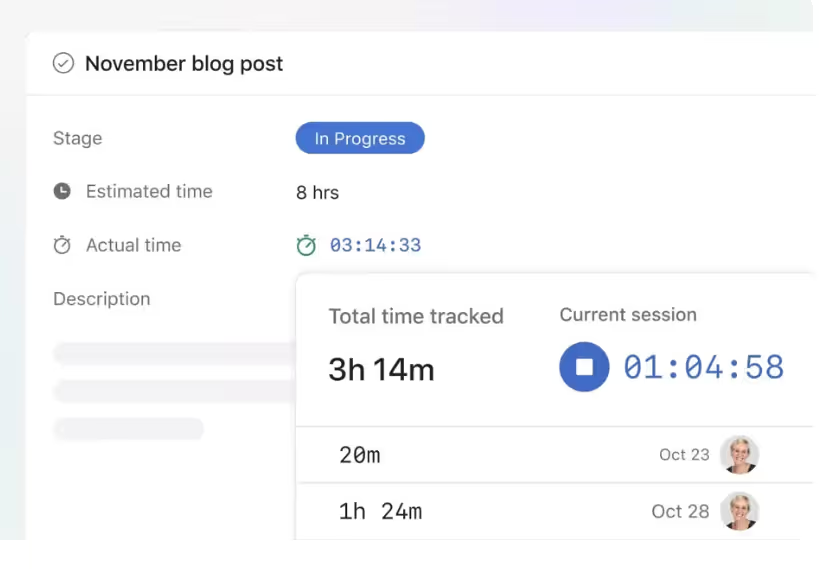
But that's about it. You don't get detailed reporting, even if you subscribe to higher plans, no detailed timesheet functionality, time approval, or even budget features. Admins cannot track on behalf of others or get real-time activity insights within Asana.
To do this, you’d need to integrate with third-party time tracking tools like Time Doctor or Clockify.
It's not all bad, though. Asana makes up for it with its Workload management feature.
In its Workload View, you can see a complete view of tasks assigned to your team, including who was assigned to what task, and each team member's current workload capacity.
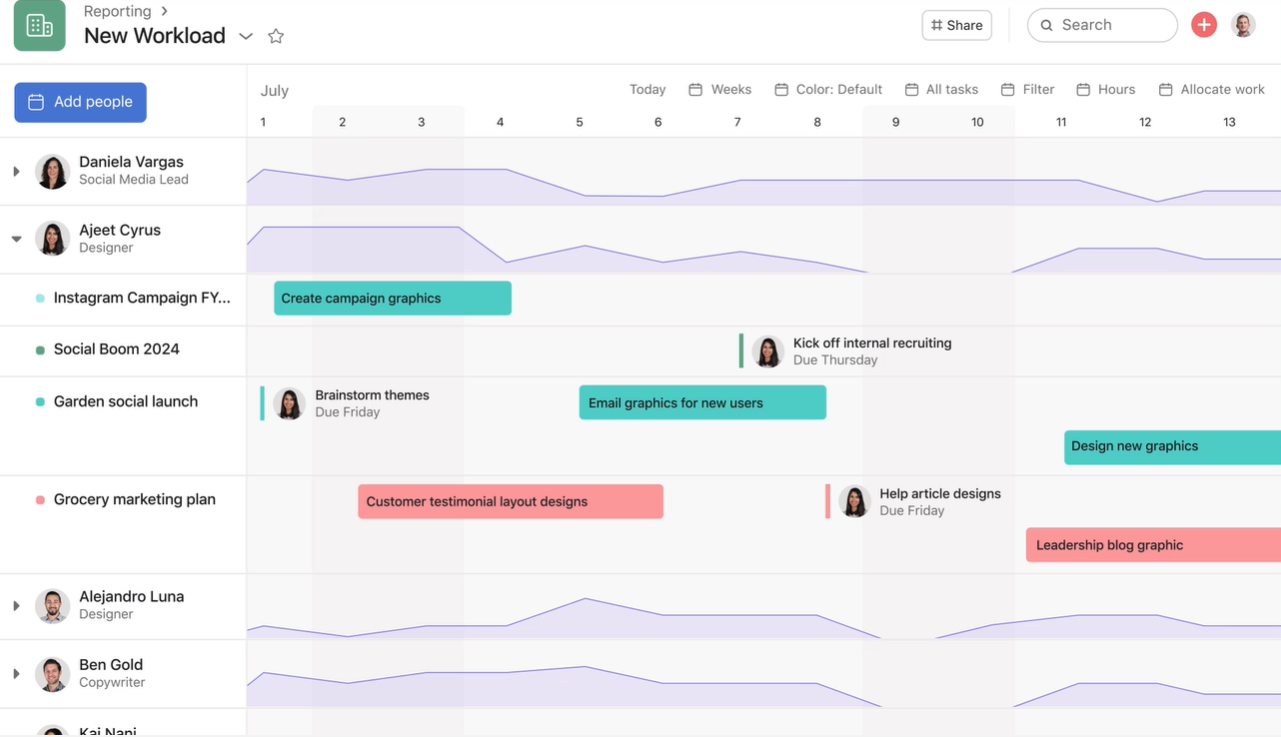
You can also set their workload capacity so you know who's currently underworked and which member is handling tasks that exceed their workload capacity.
Now, this is one of Asana’s strong suits. The platform has a Rules feature that lets your team automate repetitive processes without code with the If this — then that logic.
For example;
Asana has an AI (Asana Intelligence) that can summarize project updates and suggest task priorities based on team activity.
Asana’s interface is simple and quite easy to understand, but it doesn't offer some of the features that are important to creative agencies, like client portals or detailed reporting and time tracking features.
There are also no profitability or budgeting features to help creative agencies plan their invoices and get paid.
Personal: $0 billed monthly
Starter: $13.49 billed monthly
Advanced: $30.49 billed monthly
Enterprise: Reach out to sales.

Asana vs Teamwork can help creative agencies to a point; there are lots of loopholes that they don't fill.
For one, Asana doesn't provide any budgeting or invoicing feature to bill your client, and while Teamwork does a fraction of that, it doesn't give your clients a completely white-labelled client portal that erases all traces of a third-party platform between you and the client.
ManyRequests does all of this, and more.
ManyRequests is an all-in-one project management and white-label client portal tool.
It consolidates every creative agency process, from when you secure a lead to when you send out invoices for a completed project, into one platform.
This means that you can do everything (client onboarding, project management, reporting, feedback, billing, payment) without leaving the ManyRequests platform.
Let's see some of its features:
ManyRequests provides a private branded client portal where your clients can log in, submit project requests, track progress, view their files, approve deliverables, and still manage invoices.
One of the differences between the ManyRequests client portal and Teamwork is that you can fully customize the ManyRequests platform with your logo, domain, brand colors, and the general feel of your brand.
For example, this is what the ManyRequests platform looks like:
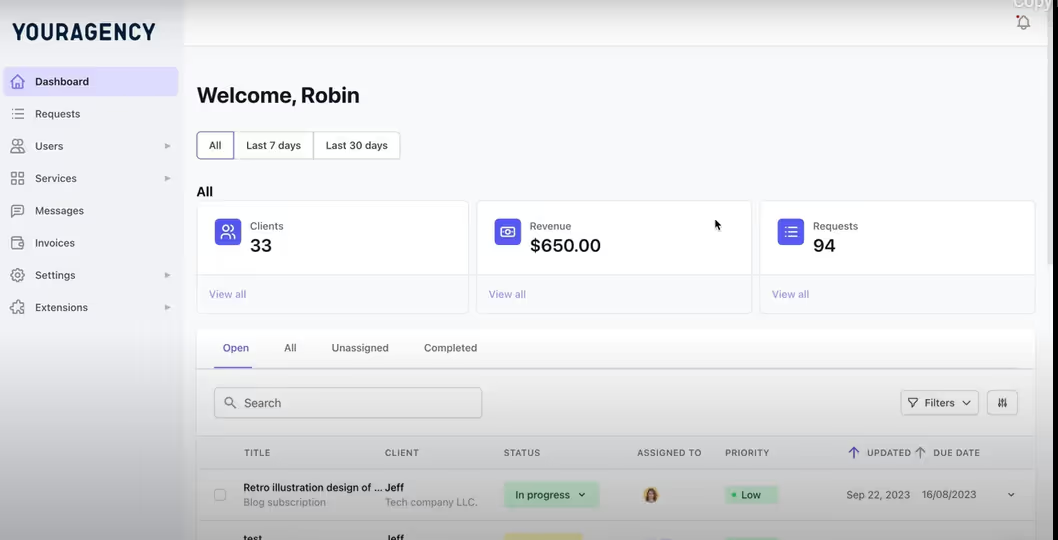
And this is what it looks like after a rebrand from one of our clients, Pronto:
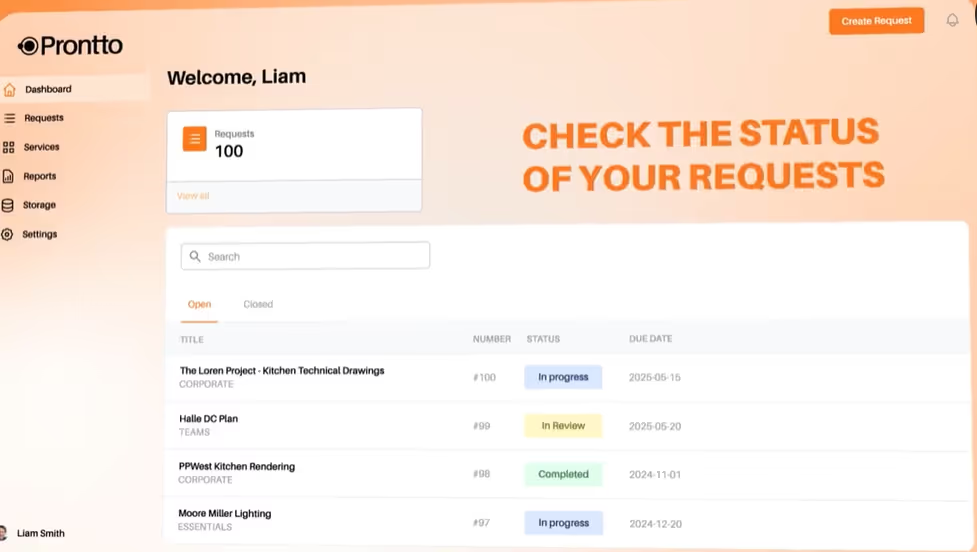
Your clients won't see a third-party tool, just your agency's workspace, and every interaction you have with them happens in a polished environment. Almost like they're in a physical office with you.
Clients can submit work requests directly from their portal with the service request form.
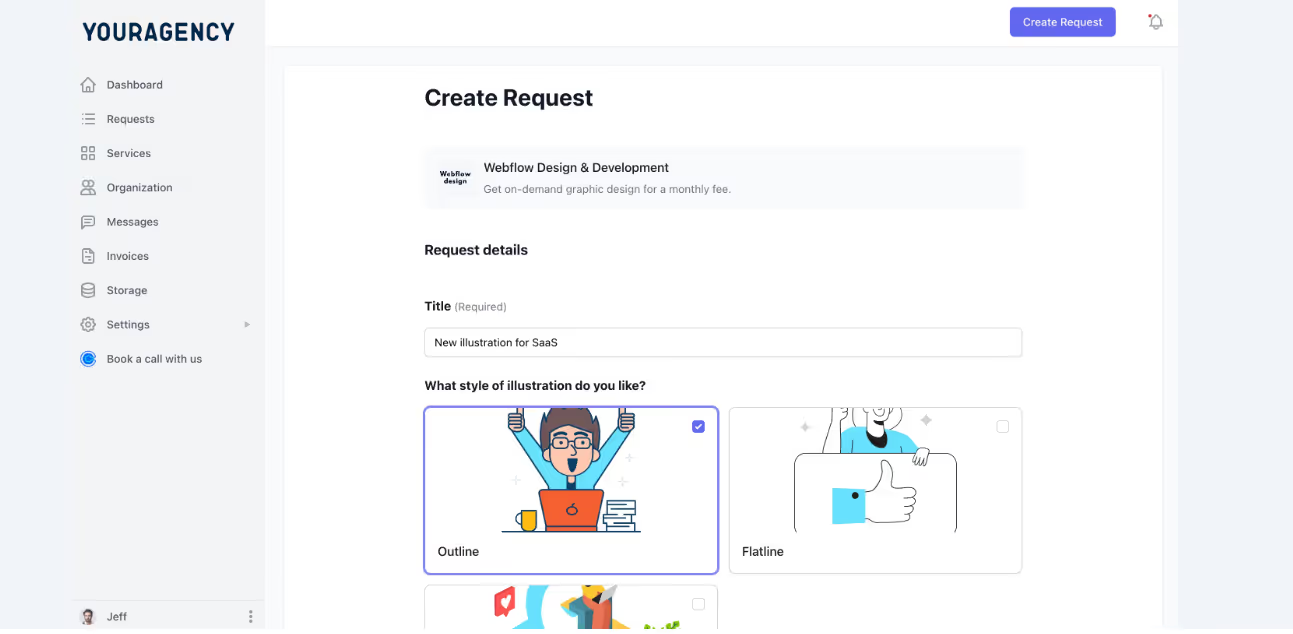
When they create a request, ManyRequests sends them a fully customizable form that asks them for project details, like the kind of design they want, when they want the deliverables, project assets, etc.
Once they submit the form, the request automatically appears in the agency’s internal dashboard, where your project managers can review and assign tasks to their team members.
You can also create requests from your end.
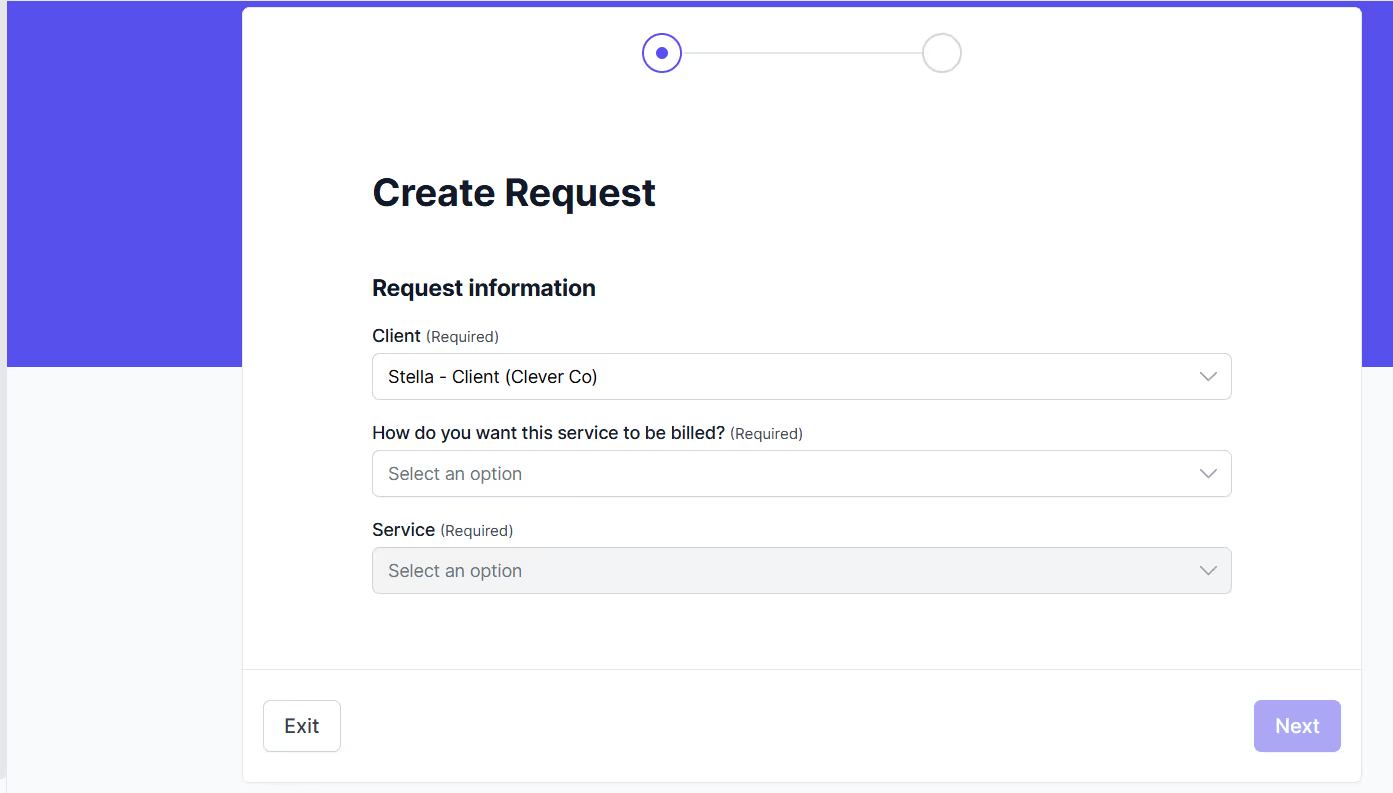
All you need to do is fill out the form with the necessary information, and the client accesses the information from their portal.
Requests also move through customizable stages in ManyRequests. For example, this piece went through a To Do — In Progress — Pending Feedback — Revision Needed — Completed, and more.
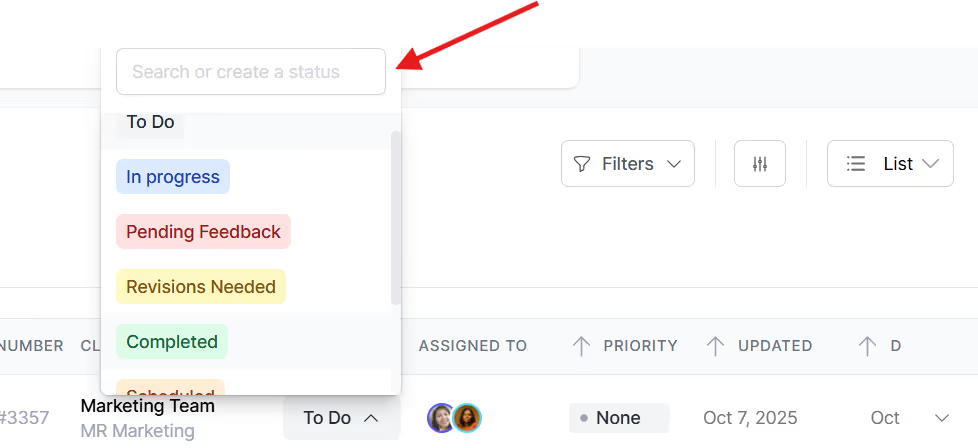
This helps you keep track of the task progress and whether your team members can take on more tasks.
Clients can click directly on design documents to leave comments on them. When your team submit a design task, the client can send feedback on corrections through the ManyRequests annotation tool.
All they need to do is click on the part of the image that needs correction and annotate the area with circles. Each circle is linked to a comment section where the client can drop their correction, and the designer can reply.
Here's an example of an annotated design document:
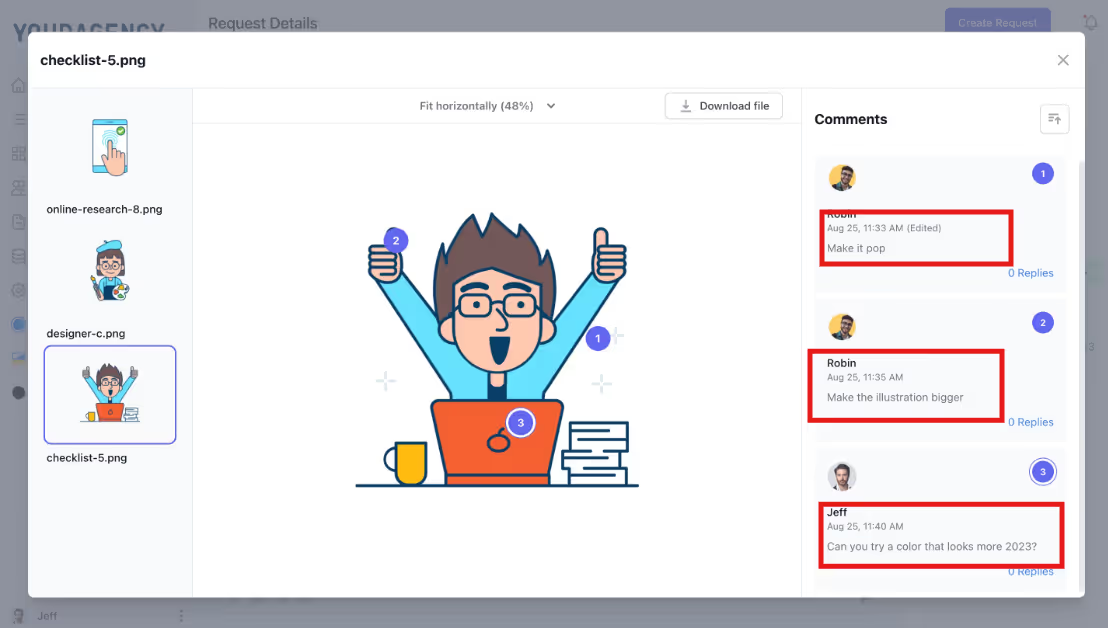
Every revision and comment they make is stored in the cloud, so your team can easily access it for future use.
ManyRequests combines automated time tracking with built-in billing and invoicing in one portal. Your team members can activate a timer when they start working on an assigned project.
Once it's enabled, the timer runs in the background until they stop it. They can also log in their spent time manually after the job is completed.
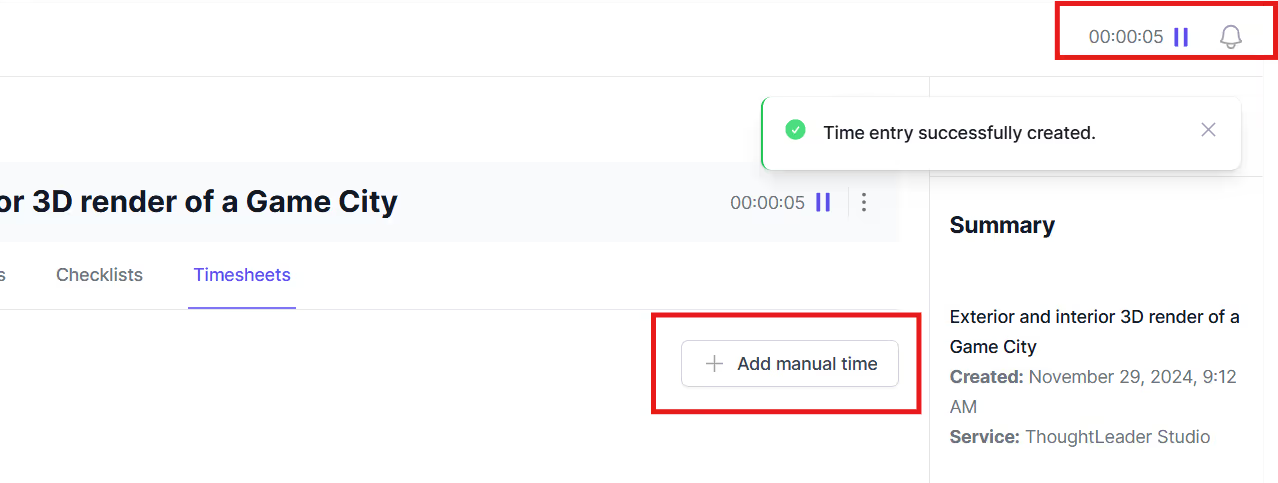
The tracked hours are logged into detailed time reports that you can share with clients to show how your team spent their time on their projects.
If you work on hourly contracts, ManyRequests automatically calculates billable earnings based on pre-set hourly rates for each client or team member. You can then generate invoices from the tracked time data and send them to the client.
If you're a productized service model, ManyRequests also offers customizable service catalogs where you can list the details of each productized service you offer, the pricing, and the client pays before the project begins.
Read More: What is a Productized Service?
Here's an example of a service catalog from ManyRequests:
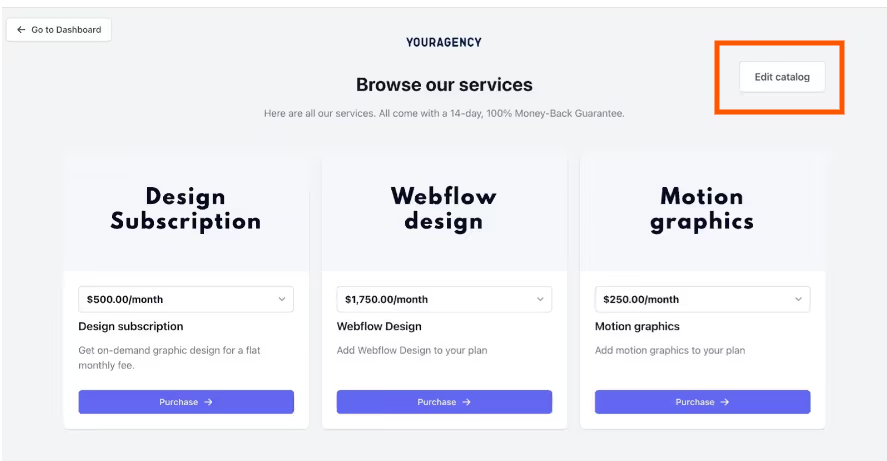
While ManyRequests has everything you need, it may feel a bit overwhelming if you don't need everything it offers. If you handle internal-only projects without the need to talk to clients, then you may be a bit overwhelmed.
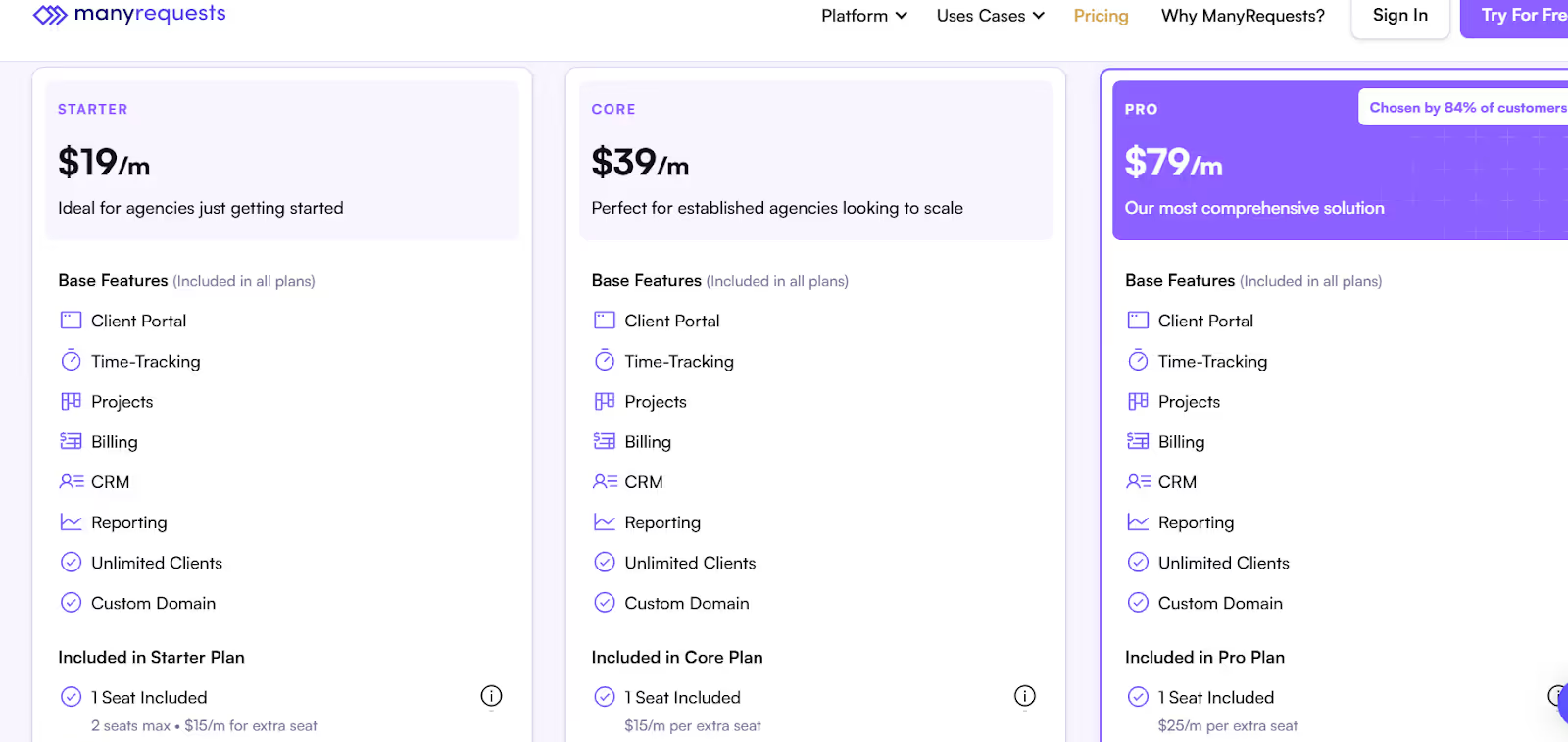
ManyRequests pricing starts at:
Starter: $19 billed monthly,
Core: $39 billed monthly,
Pro: $79 billed monthly.
You can also sign up for a 14-day free trial for any of these plans to know which is best for your agency.
Asana and Teamwork are capable tools, but they cater more for internal project management than to full client delivery. Asana is best for team collaboration and visual organization, and Teamwork is great for resource planning and budgets, but ManyRequests combines these features into one platform.
With ManyRequests, creative agencies have completed solutions to manage client requests, projects, approval, team collaboration, and payments, all under their own brand.
If your agency prioritizes client relationships and recurring work, sign up for ManyRequests 14-day free trial to see how the platform can improve your workflow and client management.
Teamwork is better for client-facing work, with strong time tracking and billing features, while Asana is better for internal team task management and easy collaboration. The best depends on your team’s needs.
Alternatives like ManyRequests, Asana, and Monday.com might be better depending on your creative needs.
Communication, Collaboration, Cooperation, Coordination, and Commitment.